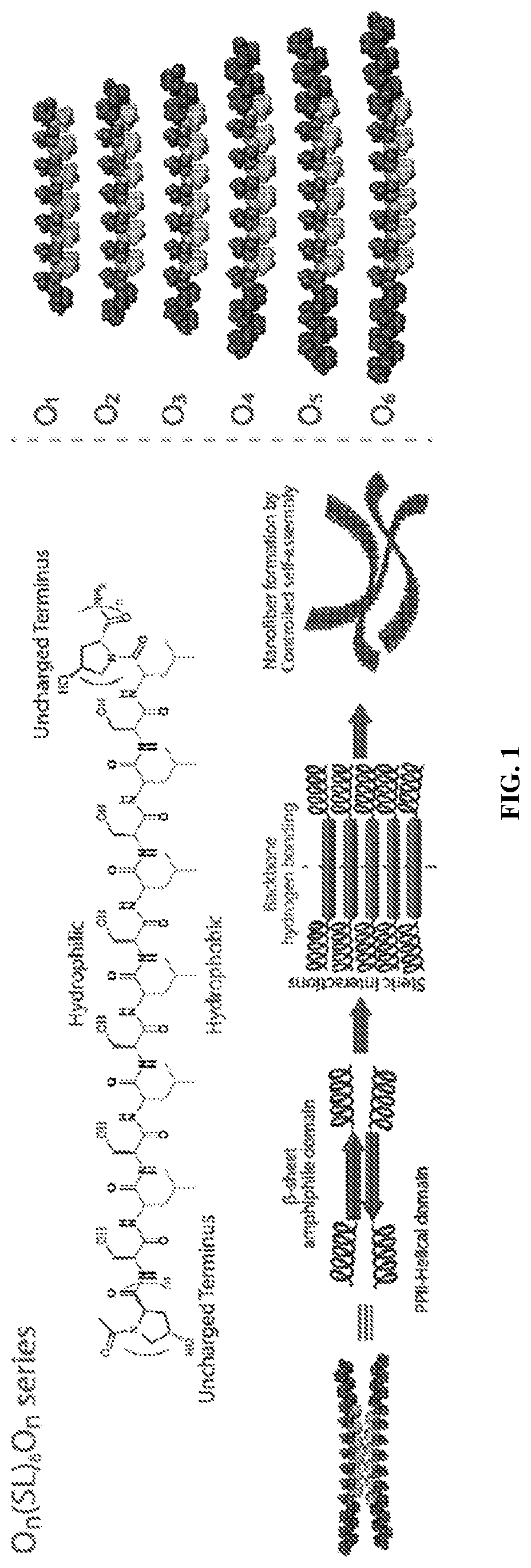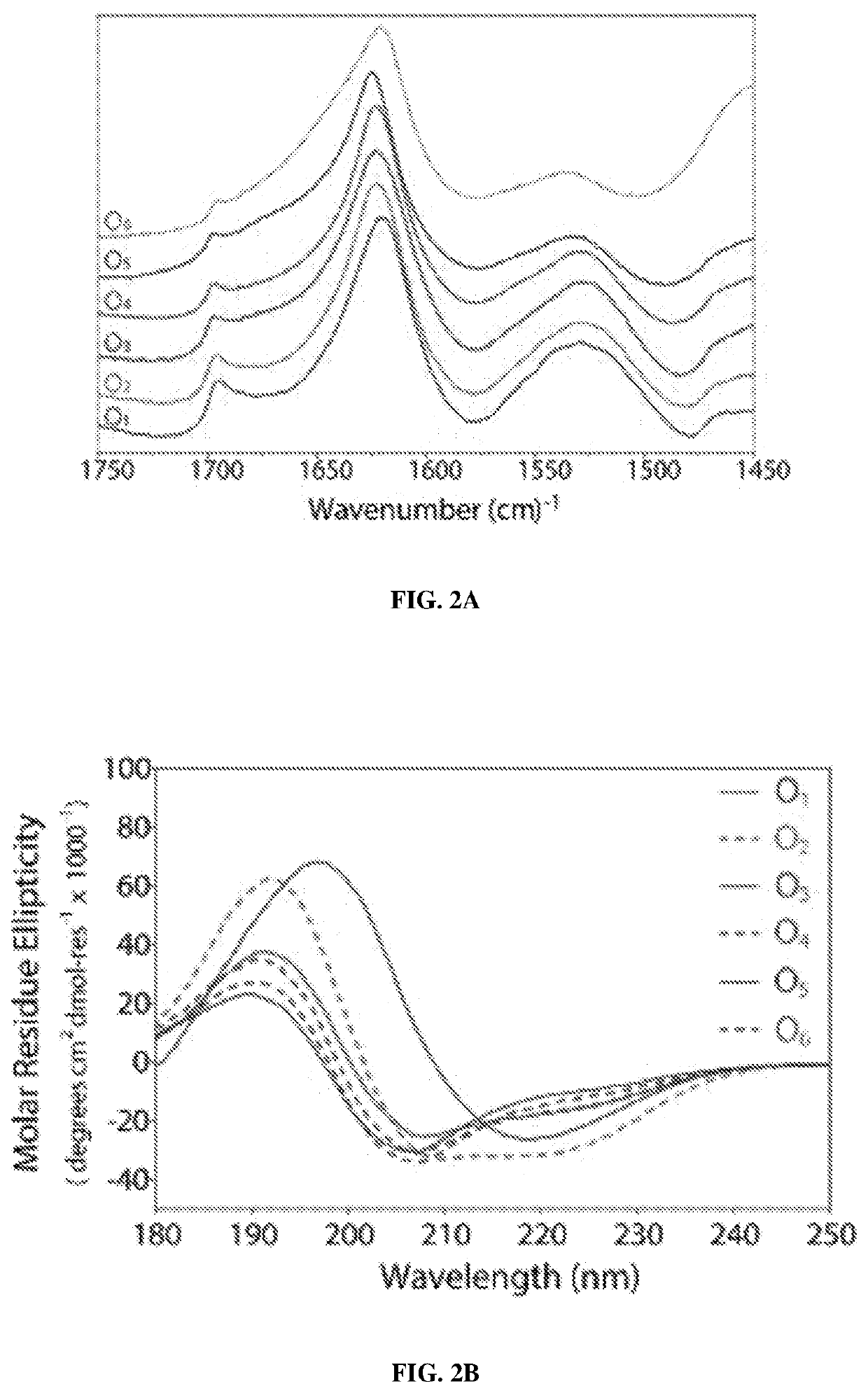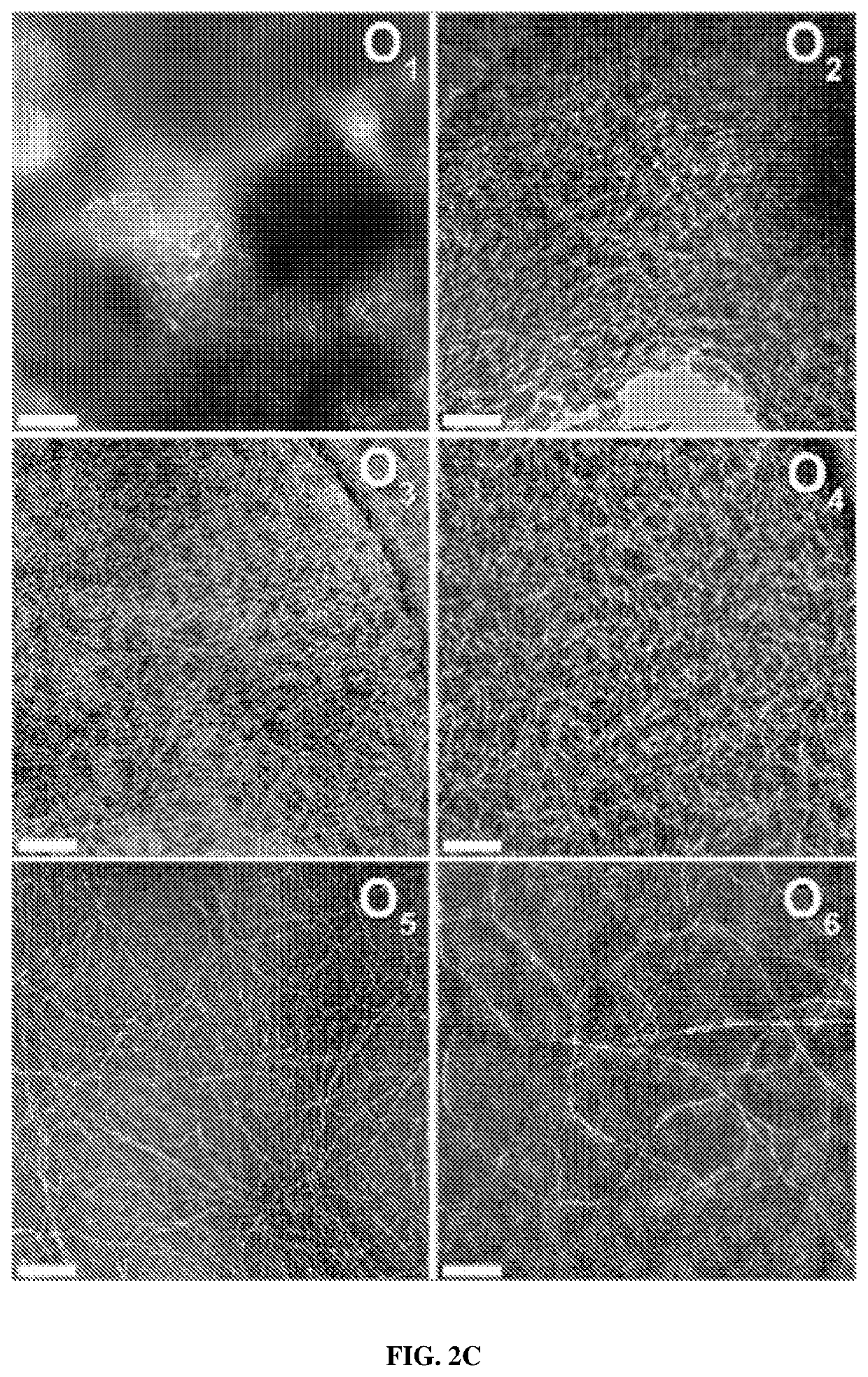Neutral multidomain peptide hydrogels and uses thereof
a multi-domain, peptide technology, applied in the field of chemistry, cell biology, medicine, can solve the problems of difficult potency and differentiation capacity, difficult cell recovery and cell activity protection, and difficult therapeutic use of peptide hydrogels, so as to promote their preservation, maintain their viability, and grow the effect of capacity over tim
- Summary
- Abstract
- Description
- Claims
- Application Information
AI Technical Summary
Benefits of technology
Problems solved by technology
Method used
Image
Examples
example 1
sub>(SL)6On Series Peptides
[0078]Previously, a class of self-assembling peptides, called Multidomain Peptides (MDPs), has been studied (Dong et al., 2007). These peptides are designed with an ABA motif, where the B domain alternates hydrophilic and hydrophobic amino acids while the A domain contains charged residues. The balance between charge repulsion at the ends of the peptide and stabilizing hydrogen bonding and hydrophobic packing in the core controls the extent of self-assembly. In aqueous solution, the peptides typically adopt an antiparallel sheet conformation and assemble into nanofibers driven by the hydrophobic effect and hydrogen bond formation between backbone amides. Fiber length and stability are modulated by pH or the addition of multivalent ions, which screen the electrostatic repulsion and shift the balance of supramolecular forces towards assembly of nanofibers. Upon achieving sufficient length, these nanofibers entangle and form a viscoelastic hydrogel (Dong et a...
example 2
Structure Characterization of On(SL)6On Series Peptides
[0079]From the series of O6(SL)6O6 peptide, O1-O4 were poorly soluble in water (5 and O6 were found to be soluble in water at 1 mg / mL. At 10 mg / mL, O5 forms a hydrogel while O6 is a viscous solution. The ATR-FTIR spectra (FIG. 2A) of the dried peptide films presented a peak between 1620-1630 cm−1, which corresponds to the amide I band of a β-sheet conformation, and a weak peak around 1695 cm−1 indicating an antiparallel component. These results indicate that the core β-sheet structure is not significantly disturbed by the oligo-hydroxyproline termini in the dried samples. Poor solubility of O1-O4 made the characterization across all peptides in uniform solvent challenging, therefore 2-2-2-trifluoroethanol (TFE) was often used as a solubilizing agent for sample preparation and characterization. Circular dichroism (CD) spectroscopy of peptide solutions in TFE (1% by weight, 7-4 mM) was performed (FIG. 2B). CD of O1 corresponds to ...
example 3
ture of On(SL)6On Series Peptides
[0080]Negative-stain TEM was used to analyze the nanostructure of the O1-O6 peptide series. The very poor water solubility of O1 and O2 resulted in dense clusters of nanofibers along with amorphous aggregates in their TEM images with only rare areas being dispersed enough to see the underlying nanofibrous structure (FIG. 2C). However, the dispersion of the nanofibers increases with the number of hydroxyproline residues, improving their visualization. Also, the apparent fiber length increases with greater numbers of hydroxyproline residues. While fibers from O1-O4 appear mostly short and rigid, O5 and O6 nanofibers are significantly longer and display more curvature, suggesting a more flexible fiber. TEM was also performed on O1-O6, which had been initially dissolved in TFE to help disperse the assembled nanofibers and revealed similar trends to those formed only in water (FIG. 9). These data suggest that the increase in hydroxyproline residues and, t...
PUM
 Login to View More
Login to View More Abstract
Description
Claims
Application Information
 Login to View More
Login to View More - R&D
- Intellectual Property
- Life Sciences
- Materials
- Tech Scout
- Unparalleled Data Quality
- Higher Quality Content
- 60% Fewer Hallucinations
Browse by: Latest US Patents, China's latest patents, Technical Efficacy Thesaurus, Application Domain, Technology Topic, Popular Technical Reports.
© 2025 PatSnap. All rights reserved.Legal|Privacy policy|Modern Slavery Act Transparency Statement|Sitemap|About US| Contact US: help@patsnap.com



